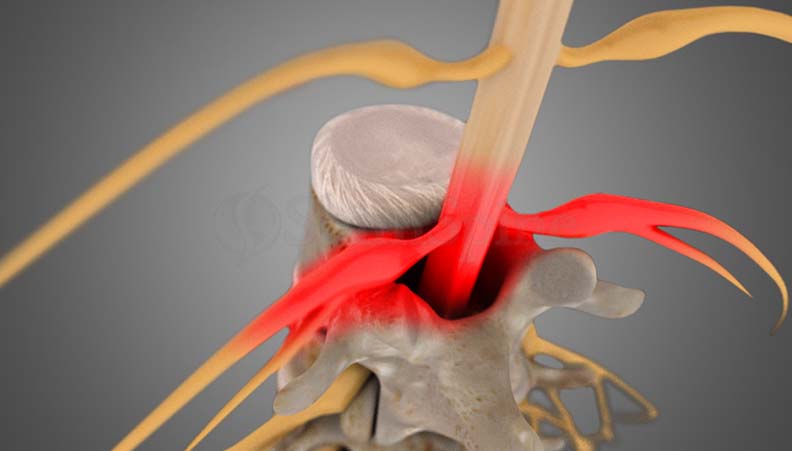Lumbar Stenosis
Lumbar spinal stenosis is a condition where either the spinal canal (central stenosis) or one or more of the nerve openings between the vertebrae becomes narrowed (foraminal stenosis). If the narrowing is substantial, it causes compression of the spinal cord or spinal nerves, which causes the painful symptoms of lumbar spinal stenosis, which includes low back pain, buttock pain and lower extremity pain, numbness and tingling. This can either be bilateral (central) or on one side (foraminal stenosis). This is usually made worse by exercise and relieved by resting. Bending forward opens up the spinal canal so this a position of comfort for the patient. Bending backward will increase the pain.
Lumbar Stenosis is usually caused by degenerative arthritis of the spine, but can be made symptomatic following injury or tumor. Diabetic neuropathy and peripheral vascular disease are often mistaken for Lumbar stenosis and should be ruled out before a final diagnosis is made.
Lumbar stenosis is a progressive situation, and will increase as you age.
Lumbar Stenosis is generally treated conservatively. Conditions such as Cauda Equina Syndrome (new onset paralysis, bowel or bladder incontinence), needs rapid surgical evaluation to weigh the benefits of immediate surgery.
For patients with progressive spinal stenosis symptoms, there are elective surgical options that may provide improvement.
Last modified: October 22, 2019






